40+ Sample Lease Renewal Letters and Forms
-
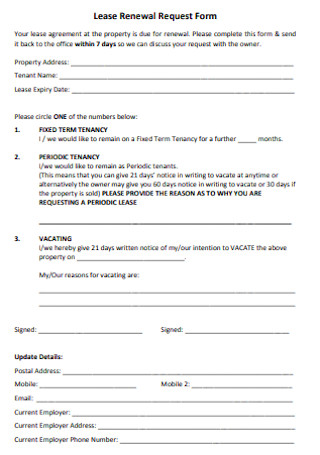
Lease Renewal Request Form
download now -
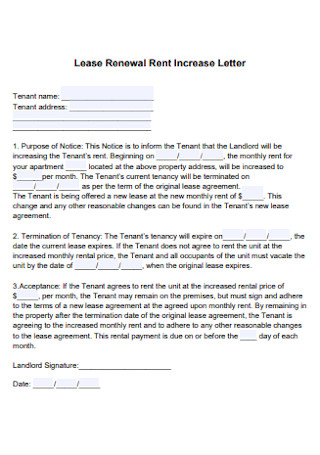
Lease Renewal Rent Increase Letter
download now -
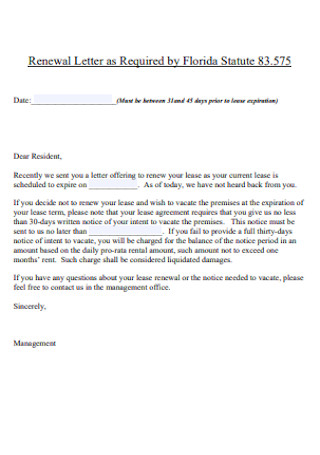
Lease Renewal Letter Format
download now -
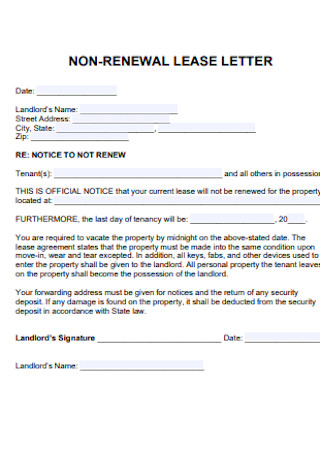
Non-Renewal Lease Letter
download now -
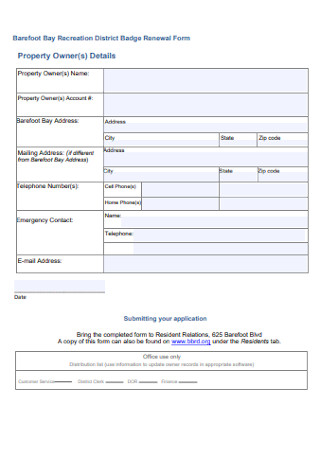
Property Lease Renewal Form
download now -
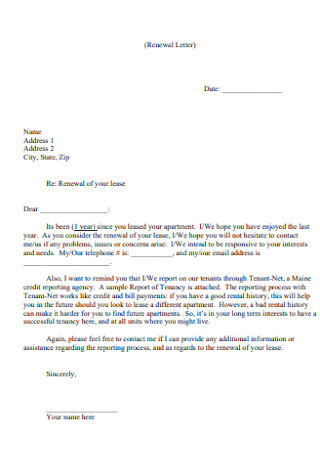
Sample Lease Renewal Letter
download now -
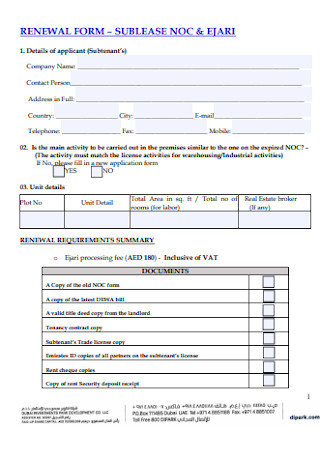
Sublease Renwal Form
download now -
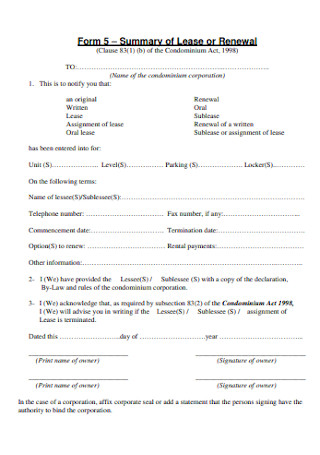
Summary of Lease or Renewal Form
download now -
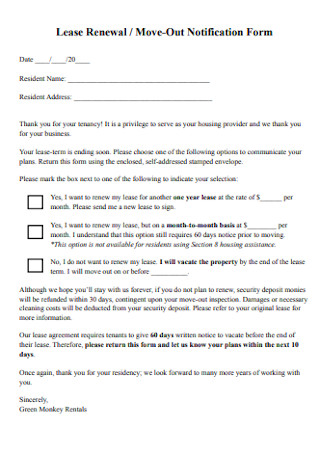
Lease Renewal and Move-Out Notification Form
download now -
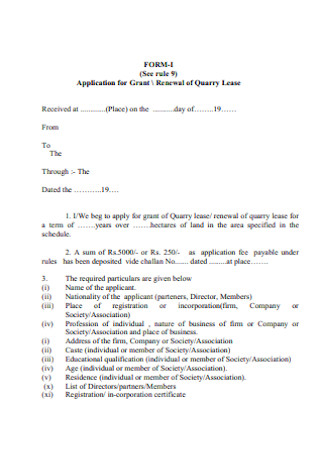
Renewal of Quarry Lease Form
download now -
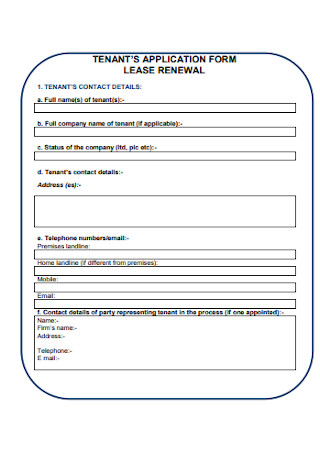
Lease Renewal Application Form
download now -
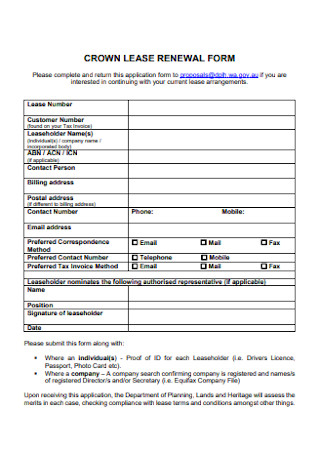
Crown Lease Renewal Form
download now -
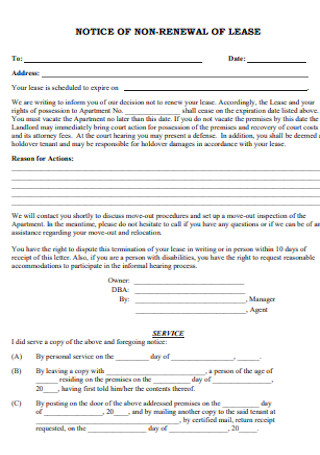
Notice of Non-Renewal of Lease Form
download now -
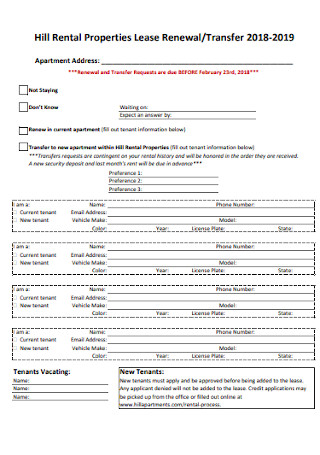
Properties Lease Renewal Form
download now -
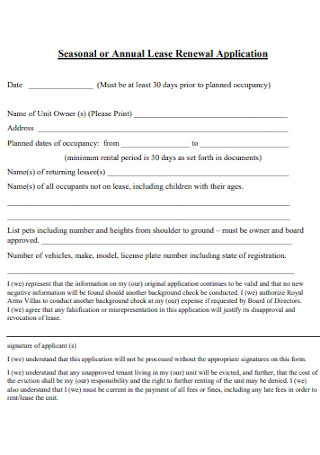
Annual Lease Renewal Application Form
download now -
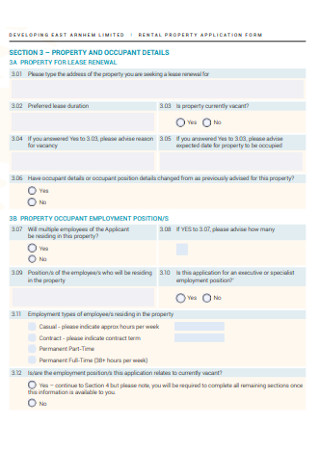
Rental Renewal Application Form
download now -
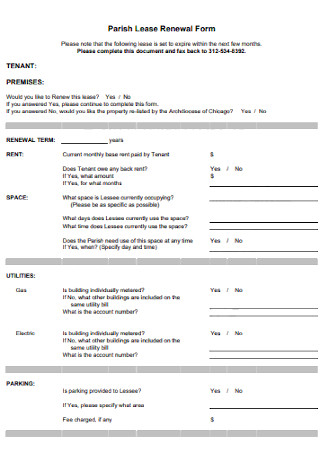
Parish Lease Renewal Form
download now -
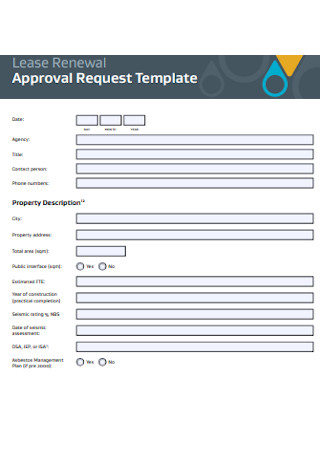
Lease Renewal Approval Form
download now -
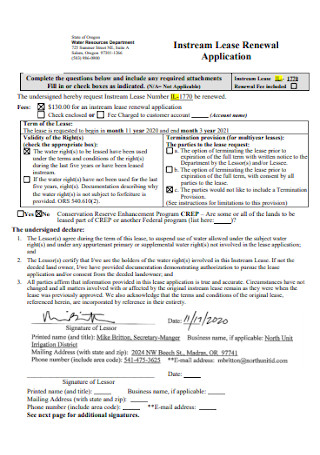
Instream Lease Renewal Form
download now -
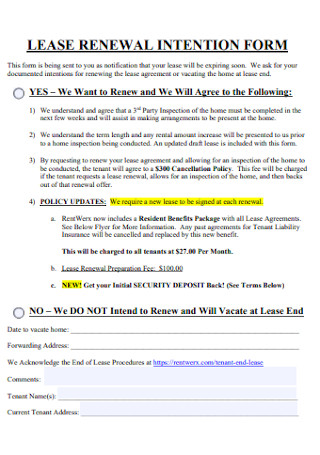
Lease Renewal Intension Form
download now -
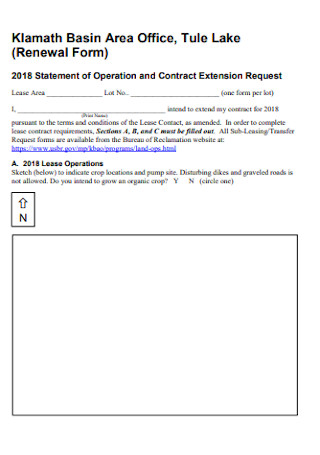
Office Land Lease Renewal Form
download now -

Renewal of Quarrying Lease Form
download now -
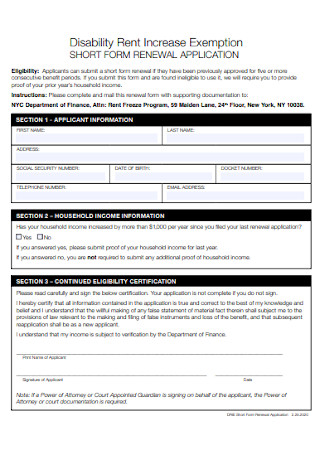
Lease and Rent Increase Renewal Form
download now -
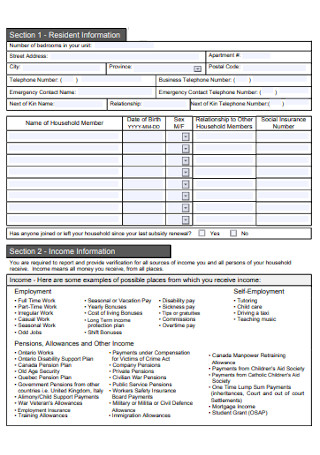
Lease Subsidy Renewal Form
download now -

Residential Lease Renewal Form
download now -
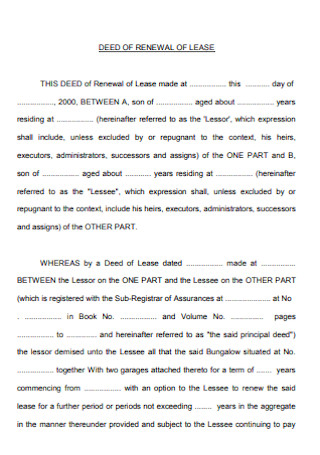
Deed of Renewal of Lease Form
download now -
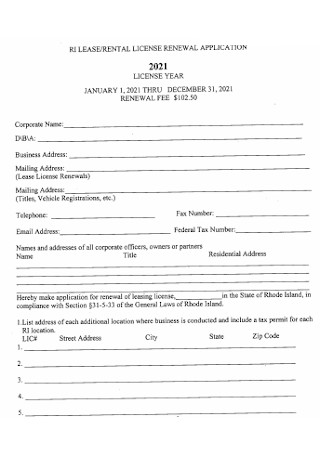
Lease License Renewal Form
download now -
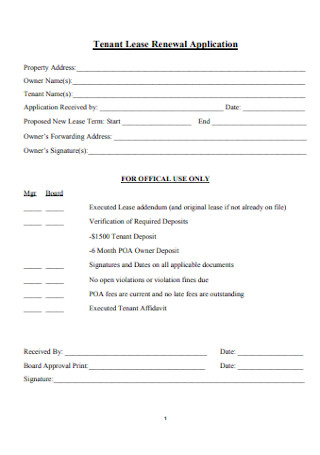
Tenant Lease Renewal Application Form
download now -
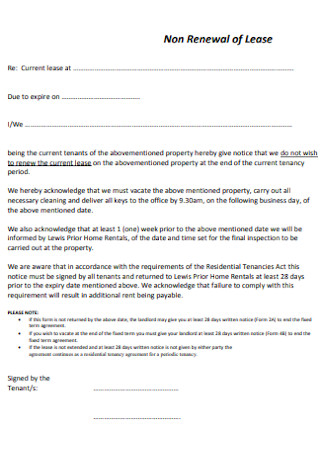
Non Renewal of Lease Form
download now -
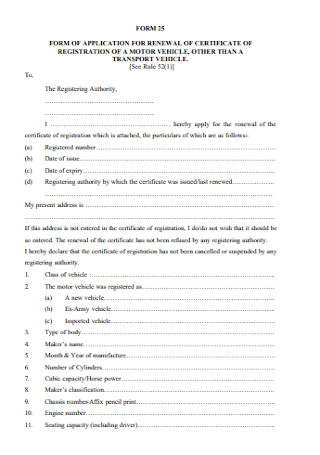
Transport Lease Renewal Form
download now -
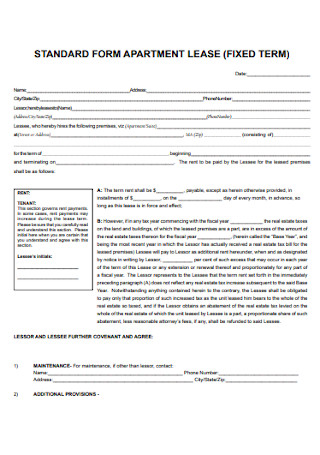
Apartment Lease Renewal Form
download now -
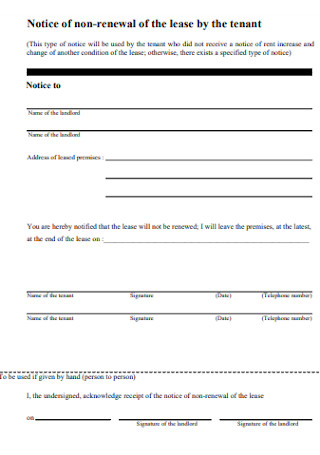
Renewal of Lease by Tenent Form
download now -

Lease or Termination Renewal Form
download now -

Mining Lease Renewal Form
download now -
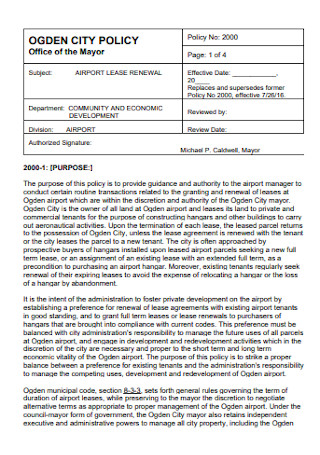
Airport Lease Renewal Form
download now -

Standard Apartment Lease Renewal Form
download now -
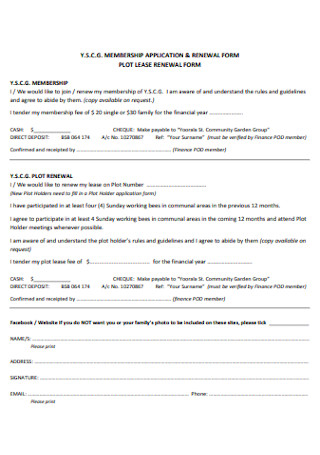
Plot Lease Renewal Form
download now -

Aquaculture Lease Renewal Form
download now -
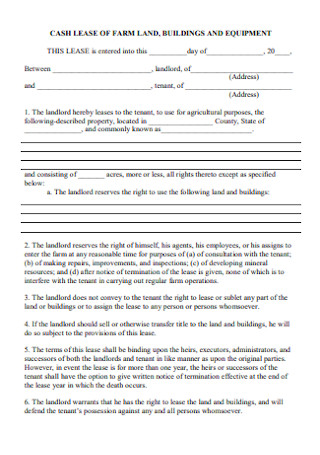
Building Lease Renewal Form
download now -
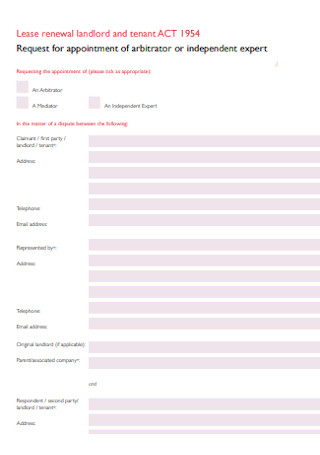
Lease Renewal Landlord Form
download now
FREE Lease Renewal Letter and Form s to Download
40+ Sample Lease Renewal Letters and Forms
What Is a Lease Renewal Letters and Forms?
Parts That Should Be Included In a Lease Renewal Letter and Form:
How To Use a Lease Renewal Letter and Form?
FAQs:
Is it necessary for a landlord to renew a lease?
How do you go about renegotiating a lease?
When Should a Lease Renewal Agreement Be Used?
A lease renewal letter and form is a legal document that allows a landlord to extend a tenant’s current lease term. This document extends the original lease agreement’s expiration date while keeping many of the lease’s parameters in place. Are you looking for templates that you can use for a lease renewal letter and form? You wanna learn more about these kinds of letters and form to be more knowledgeable about this? If yes, you came to the right place! Scroll down below to know more and download a template of your choice that can be easily edited and printable for free!
What Is a Lease Renewal Letters and Forms?
A lease renewal allows a tenant to extend their current lease beyond its expiration date. Only after both the landlord and the tenant have signed the renewal is it legally binding. In addition to the extension, the lease renewal may also include other adjustments, such as an increase in rent or the addition of property conditions. If the landlord and tenant are in good standing, the renter will typically receive a renewal notice 30 to 90 days before the original lease expires. Although the landlord is not required by law to deliver the letter to the renter, it is in their best interests to do so. Before the lease expires, a landlord or their authorized representative should fill out a Lease Renewal Letter to Renter, sign it, and provide it to the tenant.
Parts That Should Be Included In a Lease Renewal Letter and Form:
The purpose of a lease renewal is to keep good tenants who pay their rent on time and look after your property. You must prepare a new rental lease agreement even if you are continuing a lease agreement with existing renters. Because leases are fixed contracts, you won’t be able to change the end date. You will need to sign a new lease with the revised lease dates. But before you can prepare a lease renewal letter, you have to know and understand what are the parts that should be included. In knowing this, you can explain your renewal letter and form to your tenant properly. Listed below are the parts that should be included a lease renewal letter and form:
How To Use a Lease Renewal Letter and Form?
A Lease Renewal Letter and Form is a short contract that retains the majority of the original lease’s conditions while also allowing the parties to make adjustments and prolong their rental agreement. It is a document that landlords and property managers can use if they are happy with their current tenancy and want to keep it with their current tenant. The document’s goal is to notify the renter that their lease has expired and that they are welcome to extend it on the property they now occupy. Before the lease expires, start the process of employing a lease renewal agreement. State and municipal laws often specify how far ahead of the lease’s expiration date a landlord must give notice of intent to renew. However, it’s essential to notify your landlord at least 60 days before the lease expires. Learn more about using a lease renewal letter and form below:
Step 1: Send a Lease Renewal Letter as the first step
Landlords are frequently obligated to give a notice to their tenants informing them of the following:
- The landlord is open to extending or renewing the lease.
- The landlord wants to know if the renter wants to keep renting the property.
- Because the landlord is hesitant to renew the lease, the rental period will come to an end on the due date.
While the landlord is usually the one who initiates the lease renewal, tenants can also request any of the aforementioned criteria. If the tenant does not wish to renew the lease, they must notify their landlord in writing of their intent to do so.
Step 2: Terms should be negotiated
The landlord, in most situations, is the one who determines whether or not to renegotiate the lease. The tenant can ask for revisions as a perk for renewing the lease, but it is ultimately up to the landlord to decide whether or not to alter the original terms.
The landlord can incorporate new terms in the lease renewal agreement once the tenant and landlord agree on them. The lease renewal will state that the original lease will remain in “full force and effect” if both parties agree to preserve the same terms.
Step 3: Obtain the Crucial Documents
Although a lease renewal usually does not necessitate additional legal paperwork, you should nonetheless have the following in writing:
- a photocopy of the previous lease
- The new rental rate
- Modifications in the terms and conditions
- The old lease’s expiration date and the lease renewal’s start date
Step 4: The Lease Renewal Agreement must be signed
Both the landlord and the renter should read and sign the paper once the terms have been agreed upon. Make sure everyone is on board with the new arrangement, and keep a copy of the formally renewed lease agreement on hand.
FAQs:
Is it necessary for a landlord to renew a lease?
When a lease expires, both the landlord and the renter should start thinking about their next steps. If the landlord wants to keep his tenant, he can issue a lease renewal form that contains all of the details about the new lease’s provisions. Is a landlord, on the other hand, required to renew a lease on a regular basis?
The short answer is that he does not. When a tenant’s lease term expires, landlords have the option to terminate it without giving a reason. They are not obligated to renew or extend leases unless a documented agreement is in place. However, if a landlord wishes to renew the lease, he can make adjustments to the rental price or the existing lease’s terms and conditions.
If you receive notice from your landlord that he will not renew your lease, you may be curious as to why. Unfortunately, landlords aren’t required to provide an explanation, especially if your contract has already expired. However, the most common reasons for a landlord refusing to extend a lease are:
- He’s selling his property to someone else
- He’s closing it down for renovations or remodels
- You’re always late with payments, or you haven’t paid in a long time,
- You’ve violated the terms of your lease agreement.
If you live in an apartment complex and your landlord plans to renovate your unit, you can request a lease renewal letter for a different unit. You’ll still have to relocate, but you’ll be able to stay in the same area. This is especially useful if you enjoy your apartment complex and have already established a home in the neighborhood with your family.
If your landlord intends to sell the property, you can inquire if he knows of anyone else who might be interested in renting it to you. If you haven’t received a lease renewal letter from your landlord because you’ve breached the rules or haven’t made your payments on time, you should contact them immediately. Have an honest discussion with your landlord, explain your reasoning, and consider filing an appeal. If the landlord refuses to accept your reasoning, you’ll have to start looking for a new place to live.
How do you go about renegotiating a lease?
The regulations governing landlords and tenants differ from state to state. In most areas, however, the landlord is required to honor all of the provisions of the lease that is about to expire. In addition, most jurisdictions require the landlord to provide the tenant advance notice before raising the rent in an at-will tenancy. If a lease is about to expire but both parties wish to extend it, the landlord must create a new lease agreement to replace the previous one.
When compared to an at-will tenancy agreement, renewing a lease provides the landlord with a secure tenancy and the tenants with protection from a long-term tenancy. Both the landlord and the tenant have the option to negotiate new terms when drafting a new lease. Some of them might alter, while others might not. The landlord may indicate in the new agreement that the tenant hasn’t been particularly good at following the rules. He can say that if the tenant wants to stay in the house, he needs to make timely payments and obey all of the restrictions.
When Should a Lease Renewal Agreement Be Used?
When you wish to keep renting your property to the same tenant or need to alter the terms of the present lease, you should utilize a lease renewal agreement.
You can use a lease renewal agreement to inform the other party of your plans, whether you’re a landlord or a renter. Most states require landlords to provide their tenants advance notice of their desire to renew (or not renew) their lease within a certain amount of time before it expires.
A lease renewal agreement can also be used to request changes to the existing lease terms. A tenant, for example, might want to request upgrades to the present agreement’s amenities, while a landlord might want to raise the rent. After a lease expires, a lease renewal agreement can be used to change the structure of an existing lease. Tenants seeking a short-term lease or a month-to-month lease arrangement, for example, can make new adjustments without having to start the application process over.
